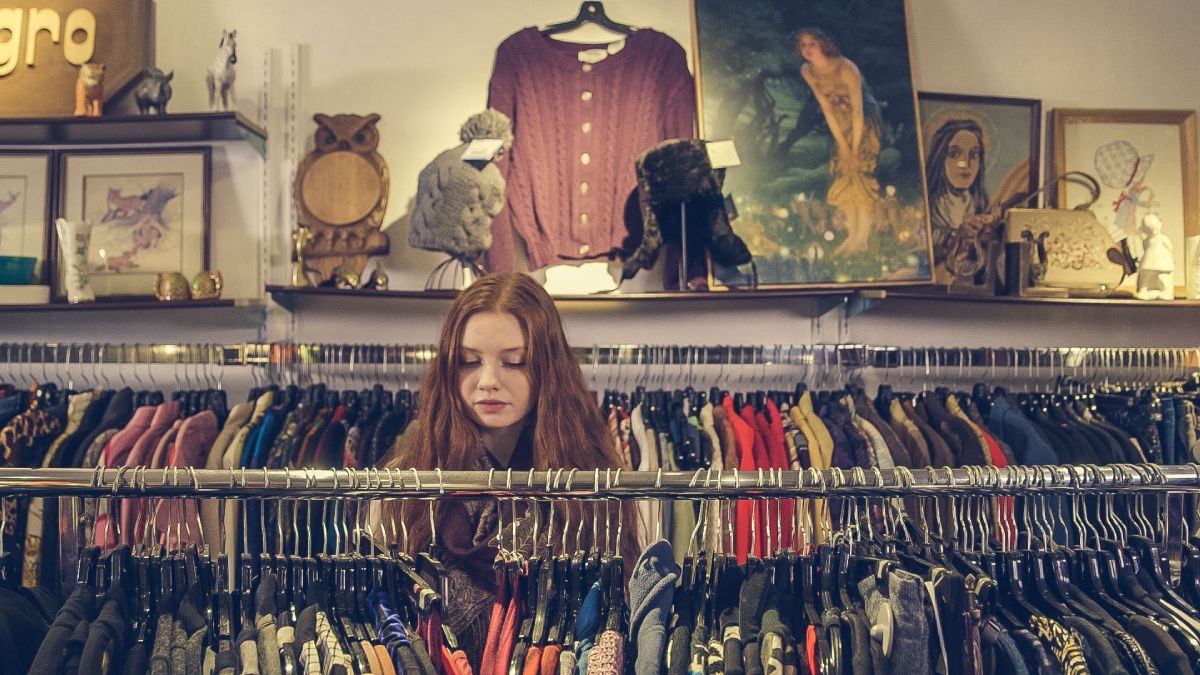Introduction
In our fast-paced world of disposable fashion and rampant consumerism, second-hand shopping has emerged as an eco-friendly alternative that is not only sustainable but also fun and budget-friendly. The surge in popularity of second-hand shopping indicates a shift in societal attitudes towards consumption, highlighting a growing consciousness about the environment, economy, and the value of reusing items.
Understanding Second-Hand Shopping
Second-hand shopping, also known as thrift shopping or op-shopping, involves the purchase of used goods instead of brand new ones. These items can range from clothing and accessories to furniture, home decor, books, and more. The main sources of these goods are thrift stores, garage sales, flea markets, online marketplaces, or charity shops, all of which have their unique charm and range of products.
The Need for Sustainable Shopping Habits
The growing popularity of second-hand shopping is a response to the growing need for more sustainable consumer habits. Our current “buy-and-throw” culture, heavily influenced by fast fashion and mass production, is causing significant harm to our planet and contributing to economic disparity. The immense waste generated, coupled with the exploitation of resources and labor, makes it an unsustainable practice in the long run. Therefore, opting for second-hand shopping is not merely a trend but a necessary step towards sustainable living.
Breaking the Stigma
For some, second-hand shopping carries a certain stigma, associated with old, worn-out, or out-of-style items. But in reality, thrift shops often house unique, high-quality items that are far from being obsolete. Breaking this stigma is essential to encourage more people to embrace this sustainable practice.
Overview of the Blog Post
This blog post will delve into the world of second-hand shopping, highlighting its benefits for our environment, economy, and personal budgets. We’ll also provide some valuable tips for finding gems in thrift stores and online marketplaces, and show how you can make second-hand shopping a part of your lifestyle. Whether you’re a seasoned thrift shopper or a newcomer interested in sustainable living, this blog will offer insights and inspiration to make your shopping more eco-friendly.
A Sneak Peek into the Sections
We’ll discuss the environmental benefits of second-hand shopping, highlight how it boosts local economies, and provide tips for successful thrift shopping. In addition, we’ll share some platforms where you can buy and sell used goods, and offer some styling tips to rock your thrift store finds. Lastly, we’ll showcase how second-hand shopping is revolutionizing our approach to consumerism and how it forms an integral part of a sustainable lifestyle.
Join us on this exciting journey to discover the world of second-hand shopping and how it contributes to a more sustainable and fair world. Be prepared to be amazed by the potential of used goods and how they can revolutionize the way we shop and live!
The Environmental Impact of the Fashion Industry
The fashion industry has a significant and often overlooked environmental footprint. From the excessive use of resources in manufacturing processes to the enormous amount of waste it generates, the environmental consequences are both severe and far-reaching. By understanding these impacts, we can better appreciate the value of second-hand shopping as a sustainable alternative.

Fast Fashion and Its Consequences
Fast fashion refers to the rapid production of high-volume, low-cost clothing by mass-market retailers. This practice caters to the latest fashion trends, pushing out new collections faster than ever before. While this ensures that consumers have access to affordable and trendy clothing, it encourages a “buy and discard” culture, leading to excessive consumption and waste.
The Demand-Supply Cycle
Fast fashion thrives on the never-ending demand-supply cycle. New trends emerge, manufacturers rush to produce relevant items, consumers buy them, and the cycle repeats. This cycle leads to the exploitation of both natural and human resources, which is a significant concern in the industry.
Waste Generation in the Fashion Industry
The fashion industry is the second-largest polluter globally, following closely behind the oil industry. One of the main reasons for this is the enormous amount of waste it generates. Every year, millions of tons of clothing end up in landfills. These discarded clothes take hundreds of years to decompose, releasing harmful greenhouse gases into the atmosphere.
The Disposable Culture
The disposable culture propagated by fast fashion contributes heavily to this waste. Clothing is seen as temporary and disposable, leading to more frequent purchases and discards.
Textile Manufacturing and Pollution
Textile manufacturing contributes significantly to environmental pollution. It consumes vast amounts of water, and the dyes and chemicals used in the process often end up polluting water bodies. For example, producing one pair of jeans requires around 7,500 liters of water - equivalent to the amount of water one individual drinks in seven years!
Synthetic Fibres and Microplastics
Many modern clothes are made from synthetic materials like polyester and nylon, which, when washed, shed microplastics into our water systems. These microplastics eventually end up in our oceans, posing a significant threat to marine life and entering our food chain.
Understanding the environmental impact of the fashion industry is crucial to realizing the importance of sustainable practices like second-hand shopping. By choosing to buy used goods, we can help break this cycle of waste and pollution, contributing to a healthier planet. In the next sections, we’ll discuss the benefits of second-hand shopping and how you can make it a part of your lifestyle.
Benefits of Second-Hand Shopping
Second-hand shopping, also known as thrift shopping, is not just a budget-friendly alternative to traditional retail shopping. It is also a powerful way to combat the environmental and social issues linked to the fast fashion industry. Let’s dive into the manifold benefits of embracing second-hand shopping.
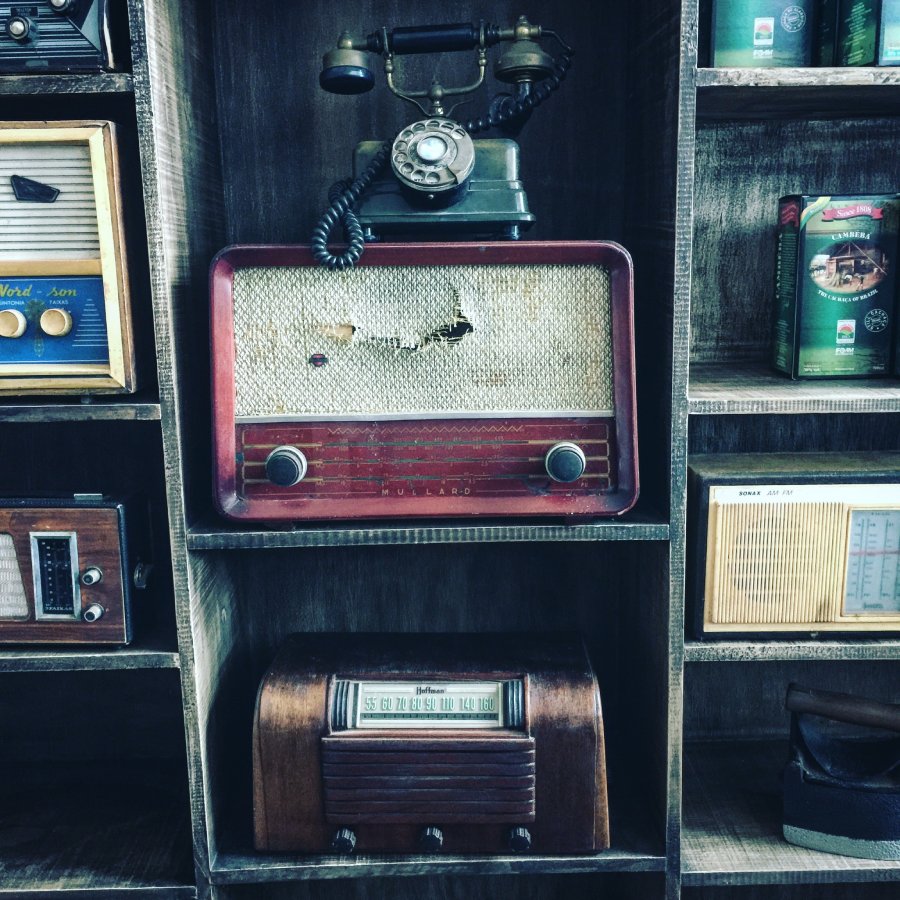
Reducing Environmental Impact
By opting for second-hand items, we can actively reduce our carbon footprint. Each item of clothing bought second-hand means one less new item produced, resulting in fewer resources used and less waste generated.
Clothing Lifespan Extension
One of the most significant benefits of second-hand shopping is the extension of a clothing item’s lifespan. By giving pre-loved clothes a new home, you’re directly combating the fast fashion industry’s disposable culture.
Saving Money
Thrift shopping is a fantastic way to save money. Items are typically significantly cheaper than their brand-new counterparts, yet they often have plenty of life left in them. This not only applies to clothing but also furniture, electronics, books, and more.
Affordable Luxury
High-end brands and designer items often find their way into second-hand stores, making luxury accessible at a fraction of the original cost. It’s not uncommon to find barely used or even brand-new items with tags still attached.
Unique and Vintage Finds
Thrift shopping is like embarking on a treasure hunt. Second-hand stores are full of unique, vintage, and one-of-a-kind items that you wouldn’t typically find in mainstream stores. This makes it possible to create a unique personal style that stands out from the crowd.
A Trip Down Memory Lane
Vintage shopping is also a trip down memory lane. It’s like walking through a living museum of fashion history, where every item has its own story to tell.
By embracing second-hand shopping, we can contribute to a more sustainable and responsible fashion industry. In the following sections, we’ll guide you through some tips and strategies to make the most of your thrift shopping experiences.
Where to Shop Second-Hand
As second-hand shopping grows in popularity, the number of places to find pre-loved items continues to expand. Whether you’re an experienced thrifter or new to the world of second-hand, you have numerous venues to explore.
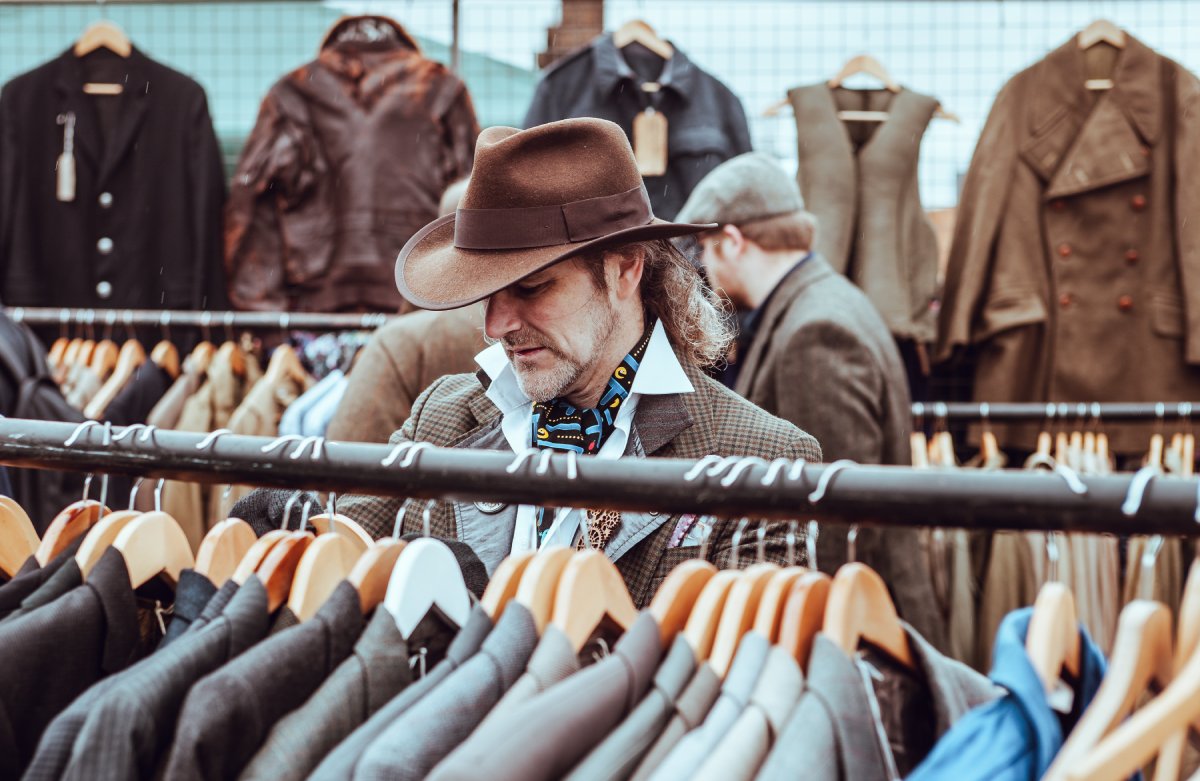
Thrift Stores
Thrift stores are the traditional go-to for second-hand shopping. They offer a vast array of goods from clothing and accessories to furniture and household items. Donating to or purchasing from these stores often supports charitable causes, too, making it a win-win situation.
Goodwill and Salvation Army
These two chains are some of the most well-known thrift stores across the globe. They offer a wide variety of items at very affordable prices.
Local Charitable Shops
Local community charity shops can be found in most cities and towns. They often support local causes and can offer some unique finds.
Online Marketplaces
The internet has transformed second-hand shopping. Online platforms have made buying and selling pre-loved goods easier than ever.
eBay and Craigslist
These two sites are the veterans of online second-hand marketplaces. You can find nearly anything on these platforms, from clothes and accessories to furniture and electronics.
Clothes-Specific Platforms
Apps and websites like Poshmark, Depop, and ThredUp focus specifically on clothing and accessories. These platforms allow you to browse a vast array of pre-loved fashion items from the comfort of your own home.
Garage Sales and Swap Meets
Never underestimate the potential of a good garage sale or swap meet. These events are not only a great way to find a bargain but also a fun way to spend a day hunting for hidden gems.
Neighborhood Garage Sales
Many neighborhoods organize collective garage sales where numerous households participate on the same day. This can be a gold mine for finding a broad range of items all in one area.
Swap Meets and Flea Markets
Swap meets or flea markets are larger events, often held in public spaces like parks or parking lots. Sellers rent a stall to sell their goods, often including vintage items, antiques, handmade crafts, and more.
Exploring the world of second-hand shopping opens up a realm of unique finds, savings, and sustainable practices. In the next section, we’ll offer tips on how to make the most of your second-hand shopping experience.
Tips for Successful Second-Hand Shopping
Second-hand shopping can be rewarding and fun, but it can also be daunting if you’re new to it. Here are some tips that can guide you to find quality, stylish, and valuable items when shopping second-hand.
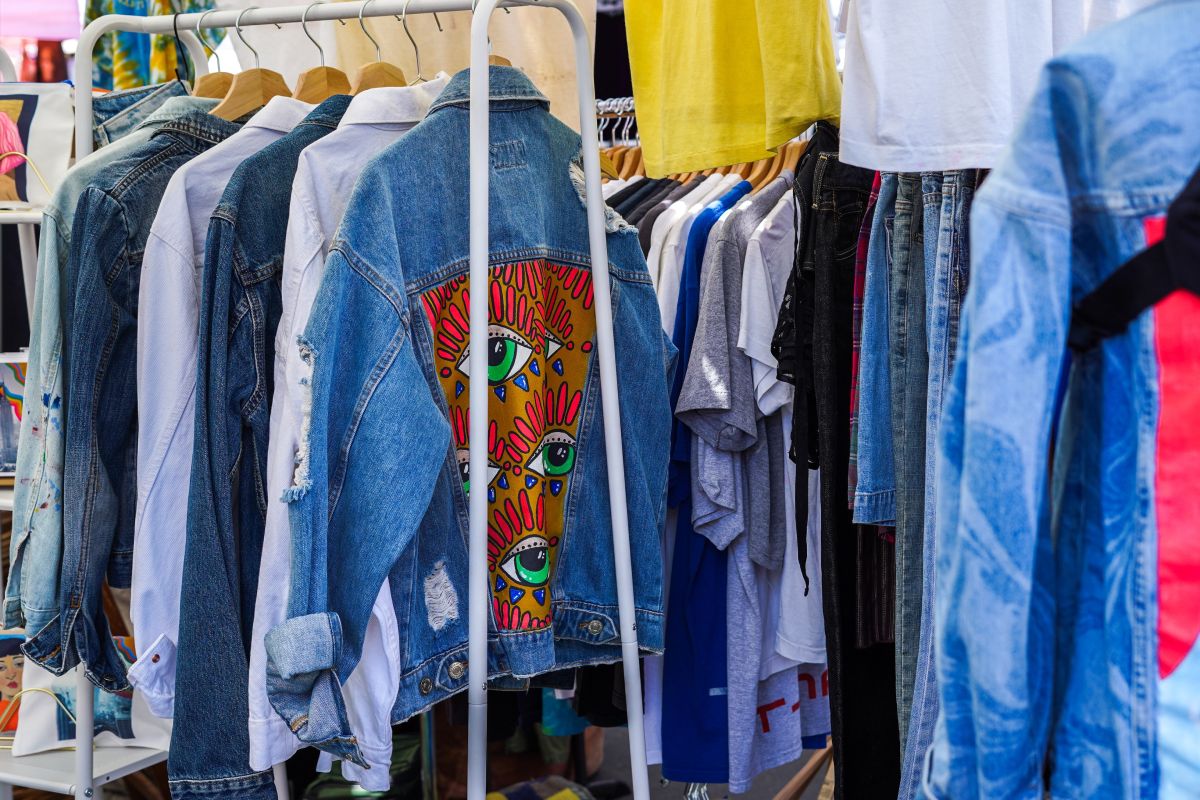
Inspecting for Quality
When you’re browsing through second-hand items, it’s essential to inspect each piece carefully. Here’s how to ensure you’re getting a good deal for the price.
Check for Damage
Look for any signs of wear and tear such as stains, holes, or fading. Check the functionality of zippers, buttons, or clasps. In the case of furniture or appliances, ensure they are in working order.
Consider the Material
High-quality materials tend to last longer. When it comes to clothes, items made from natural fibers like cotton, wool, or silk are usually a good bet.
Finding Your Style in Second-Hand Items
One of the fun aspects of second-hand shopping is discovering unique items that match your personal style.
Look Beyond Your Regular Size
Sizes can vary widely across brands and decades. An item that isn’t in your usual size might still fit you well. Try it on, or if you’re shopping online, ask the seller for measurements.
Be Open to DIY Projects
With a bit of creativity and effort, you can transform a second-hand find into a personalized piece. This could involve upcycling a piece of furniture or altering a piece of clothing.
Patience and Persistence
Second-hand shopping is not typically a “get in, get out” kind of shopping experience. It requires a bit of an adventurous spirit and the willingness to dig through lots of items to find the treasures.
Visit Regularly
New items are added to thrift stores and online platforms regularly. Frequent visits increase your chances of finding something special.
Take Your Time
Take the time to look through items thoroughly. The perfect piece might just be hidden at the back of a rack or bottom of a box.
Second-hand shopping can not only save you money and contribute to a more sustainable lifestyle but can also be a fun, treasure-hunting experience. Remember, the key is to have patience, keep an open mind, and enjoy the process. In the next section, we’ll discuss how to give back by donating your own items.
How to Maintain and Care for Second-Hand Items
So, you’ve embarked on your second-hand shopping journey and found some unique pieces. However, the key to making the most out of your thrifted finds lies in how you maintain and care for them. This section will guide you through essential tips on cleaning, repairing, and storing your second-hand items for longevity.
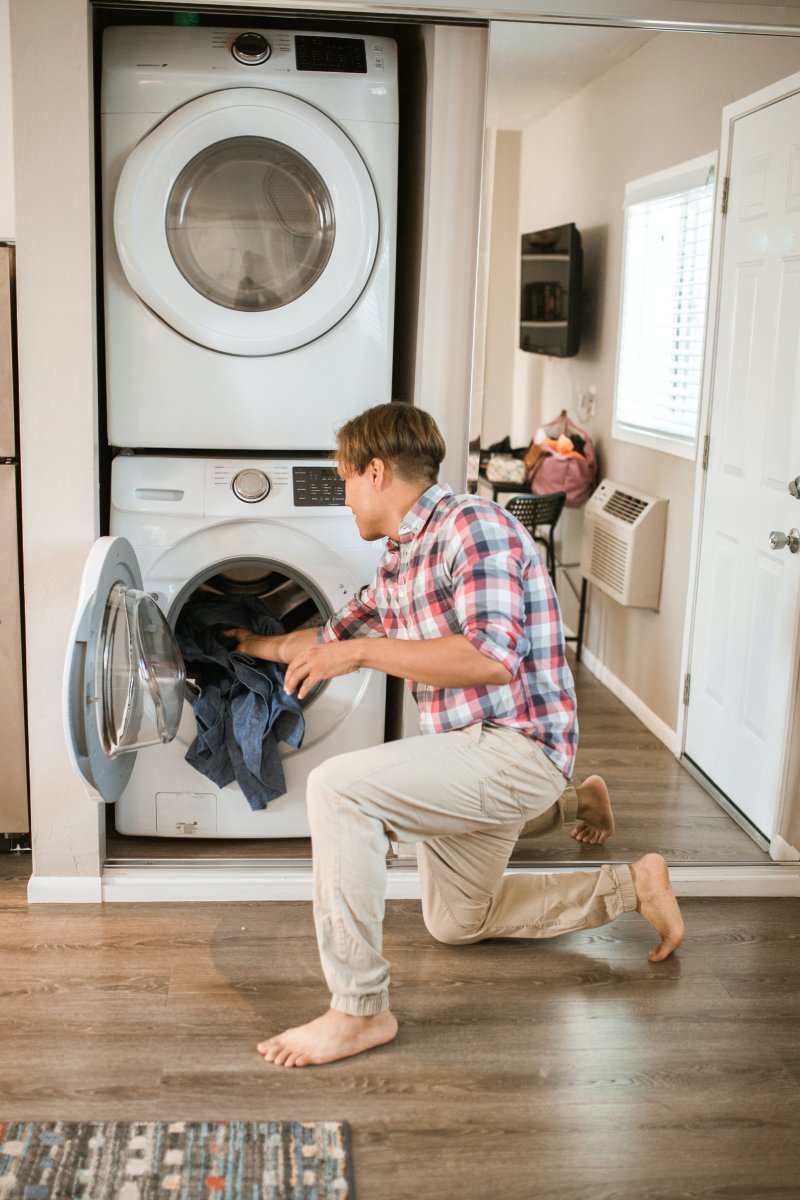
Cleaning and Sanitizing
Whether you’ve bought second-hand clothing, furniture, or home decor, the first step is to clean and sanitize your items.
Use Appropriate Cleaning Methods
For clothing, check the labels for washing instructions. If labels are missing, use a gentle cycle with cold water. For furniture and home decor, it depends on the material. A damp cloth often works, but for certain items, special cleaning supplies may be required.
Sanitize for Safety
For clothes, a hot dryer cycle can help kill off any lingering germs. For non-clothing items, use a disinfectant spray or wipes.
Repairing and Upcycling
With a little creativity and effort, you can give new life to your second-hand finds.
Learn Basic Repairs
Knowing how to mend a tear, replace a button, or fix a loose screw can extend the life of your second-hand items. There are numerous tutorials online to guide you.
Consider Upcycling
Upcycling involves creatively reusing items to give them a new purpose or to enhance their aesthetic appeal. It’s a great way to personalize your second-hand finds.
Proper Storage for Longevity
To keep your second-hand items in good shape for as long as possible, storing them properly is essential.
Protect from Damage
Store items in a clean, dry place. Protect clothing from moths with natural repellents like cedar blocks. For furniture, avoid direct sunlight, which can fade colors and warp materials.
Organize for Easy Access
Keep your items in a way that makes it easy for you to access them. This way, they’ll be used more frequently, ensuring you get the most out of your second-hand purchases.
With these tips in mind, you can ensure your second-hand purchases last, offering you value and enjoyment for a long time. It’s not just about buying second-hand, it’s about maintaining a sustainable lifestyle by caring for what you own. In the next section, we’ll delve into the world of online second-hand shopping, and how you can find the best deals right from the comfort of your own home.
Donating and Selling Your Own Second-Hand Items
Second-hand shopping is not just about acquiring items, it’s also about extending the life of your own belongings by passing them on to someone who will value them. If you have clothes, furniture, or other items that you no longer use, consider donating or selling them. Not only is it a sustainable practice, but it also can declutter your home and potentially provide a financial return.
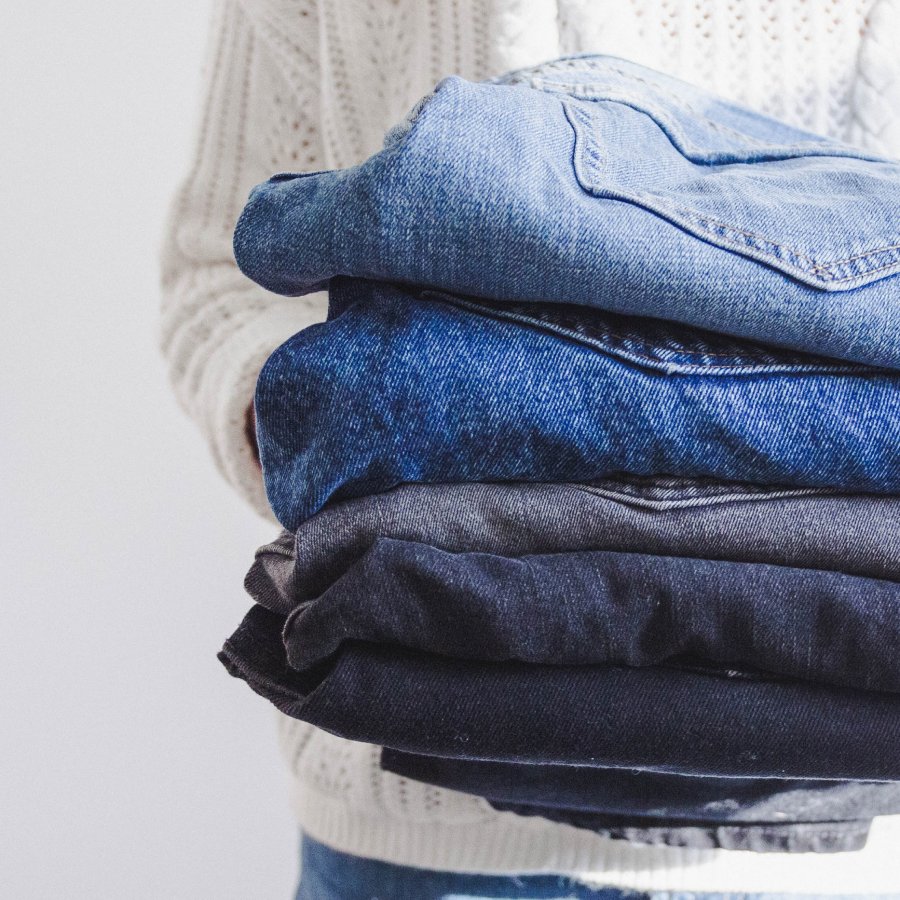
Decluttering Your Wardrobe
Evaluate Your Items
Go through your wardrobe and honestly evaluate what you wear and what you don’t. If it hasn’t been worn for a year, it’s likely you don’t need it. The same goes for furniture and other household items.
Use the Three-Pile Method
Create three piles: one to keep, one to donate, and one to sell. This will help streamline your decluttering process and make it less overwhelming.
Where to Donate or Sell
Donation Centers
Local charities, churches, and non-profit organizations often accept clothing and other items. Ensure the items are in good condition.
Online Marketplaces
Platforms like eBay, Poshmark, and Facebook Marketplace make it easy to sell second-hand items. They allow you to reach a large audience and get a fair price for your items.
Ensuring Your Items are in Good Condition
Clean Beforehand
Clean items before donating or selling them. This not only respects the next owner but also can increase the chances of your items being accepted by donation centers or bought by customers.
Check for Damages
Ensure items aren’t broken, stained, or otherwise damaged. If they are, consider whether it’s worth repairing them before selling or donating.
In essence, the cycle of second-hand shopping is a circle — you declutter, donate, or sell items you no longer need, making them available for others to use. Meanwhile, you acquire second-hand items that are new-to-you, extending their useful life. In the next section, we’ll explore how to successfully navigate the online second-hand marketplace, ensuring you find the best items for your needs.
Overcoming Misconceptions about Second-Hand Shopping
In the path towards sustainable living, second-hand shopping plays a pivotal role. However, some people may still hold misconceptions or have concerns about buying second-hand items. In this section, we will dispel some of these misconceptions and shed light on the truth behind second-hand shopping.
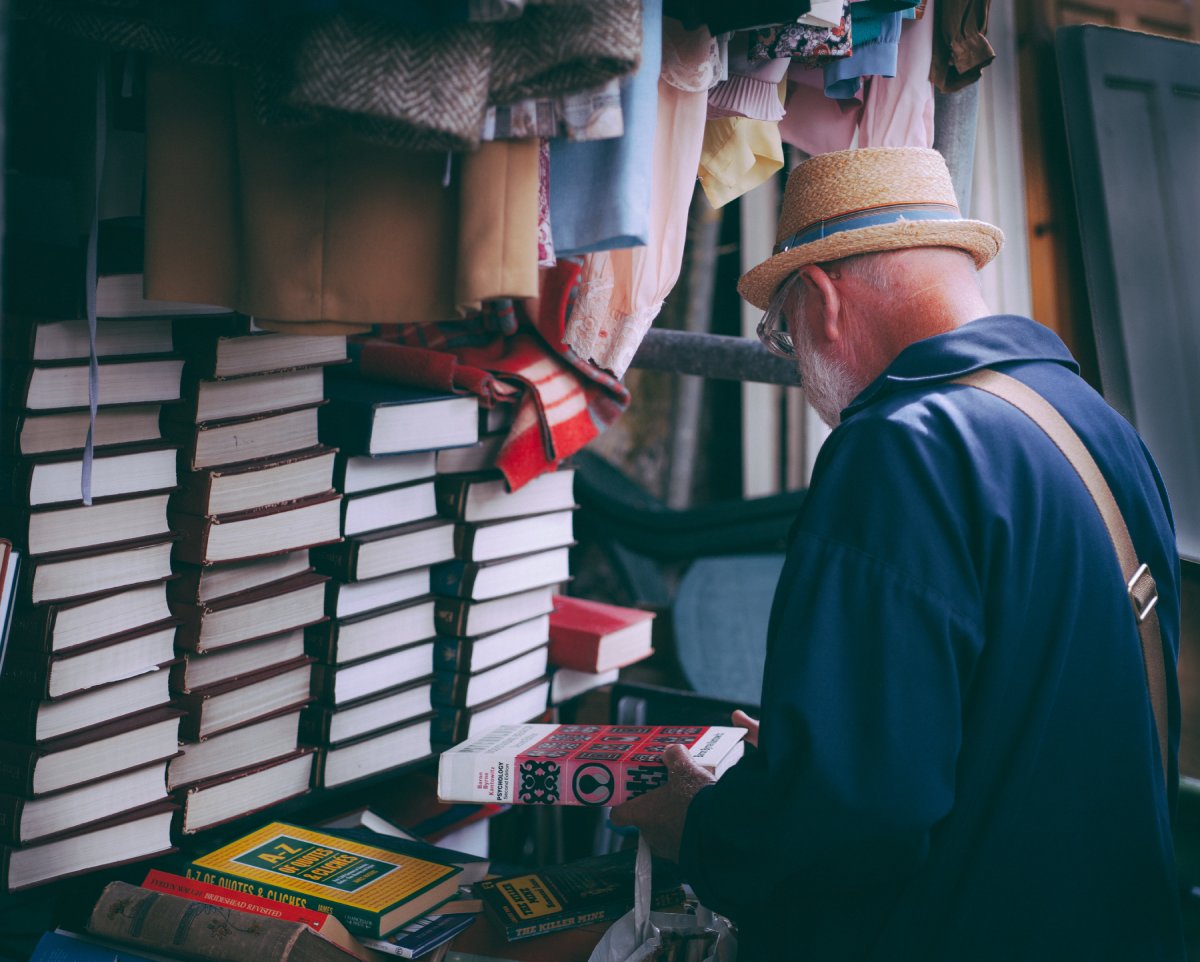
Addressing Concerns about Quality
High-Quality Items
Just because an item is second-hand does not mean it is of low quality. Many high-quality items, even from luxury brands, can be found in thrift stores or online marketplaces.
Inspecting for Wear and Tear
Second-hand items may have been gently used, but that does not make them inherently bad. In fact, you can often find items that are like new. The key is to thoroughly inspect each item for wear and tear.
The Misconception of Outdated Fashion
Trend Relevance
The notion that second-hand stores only carry outdated fashions is a misconception. Many trends are cyclical, and what was fashionable a few years ago can easily become trendy again.
Timeless Pieces
Moreover, second-hand shopping can unearth timeless pieces that defy trends and add a unique flair to your wardrobe.
Debunking Health and Hygiene Myths
Sanitation of Items
Health and hygiene concerns are often brought up when discussing second-hand shopping. However, second-hand shops take steps to clean and sanitize items. Clothes are usually washed, and furniture is typically cleaned before being sold.
Personal Cleaning
Upon purchasing second-hand items, you also have the option to clean and sanitize them further to your liking. This can provide peace of mind while also ensuring the items are safe and ready for use.
Through dispelling these misconceptions, it becomes clear that second-hand shopping is not only beneficial to the environment and your wallet, but can also be an exciting treasure hunt for quality, unique, and safe items. In the final sections, we’ll look at the bigger picture - how your second-hand shopping habits contribute to a more sustainable and equitable world.
The Greater Impact of Second-Hand Shopping
Second-hand shopping is not only an avenue for you to score unique items and save money; it also has a far-reaching impact that extends beyond the individual level. Let’s delve into how your shopping habits can contribute to your local economy, promote sustainable habits, and help decrease dependence on fast fashion.
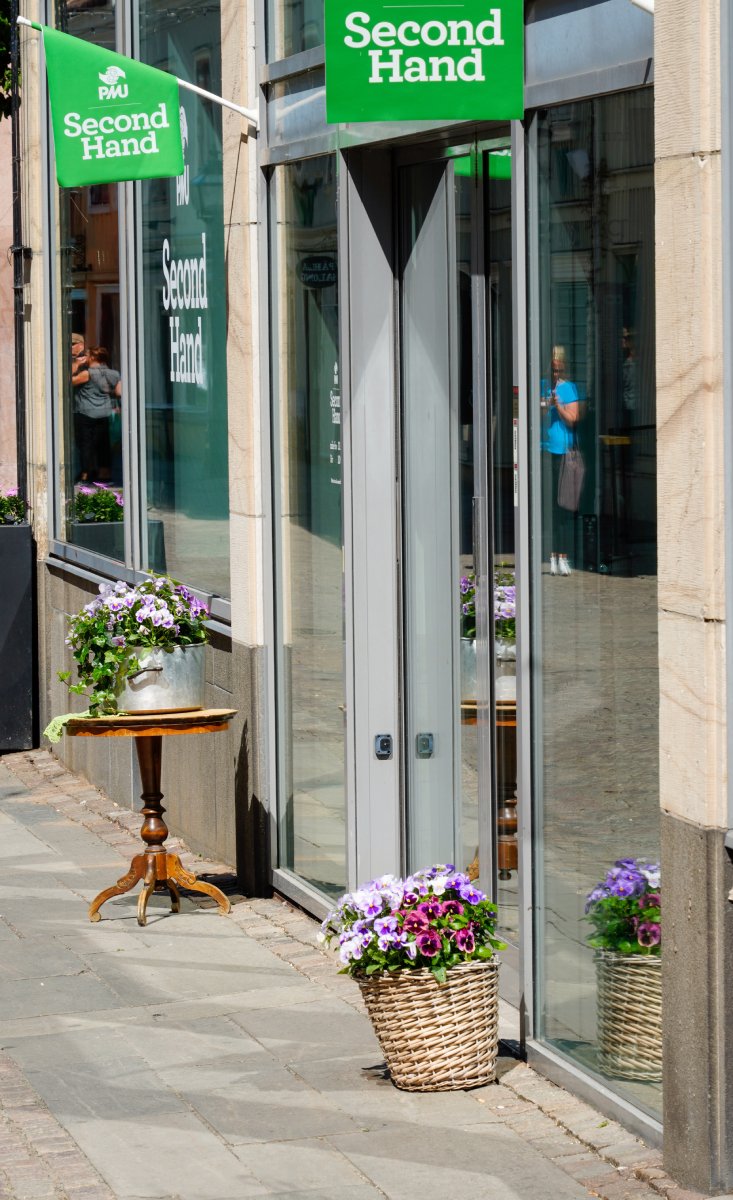
Support for Local Economy
Back to the Community
When you shop at local thrift stores, you’re not just saving money - you’re also supporting your local economy. Often, these stores are owned and operated by local residents, so the money you spend goes directly back into your community.
Charitable Contributions
Many thrift stores are tied to charitable organizations. Your purchases often contribute directly to these charities, providing essential funds to support their causes.
Promoting Sustainable Habits
Environmental Footprint
Buying second-hand items significantly reduces your environmental footprint. It promotes a circular economy, where items are reused and repurposed, reducing waste and conserving resources.
Education and Awareness
Shopping second-hand can also raise awareness about sustainable habits. As more people embrace second-hand shopping, it encourages others to consider the environmental impact of their consumption habits.
Decreasing Dependence on Fast Fashion
Breaking the Cycle
Fast fashion thrives on constant consumption, leading to environmental damage and unethical labor practices. By choosing second-hand shopping, you help break this cycle.
Value over Trends
Second-hand shopping promotes the idea of valuing items for their quality and longevity rather than following fleeting fashion trends. This mindset shift can help us move away from fast fashion and towards more sustainable shopping habits.
The impact of second-hand shopping is substantial and multifaceted. Beyond the personal benefits, it contributes positively to the community, environment, and society at large. In the next section, we will wrap up our discussion and provide a call-to-action to inspire and encourage more individuals to embark on this sustainable shopping journey.
Conclusion
As we come to the end of our discussion on second-hand shopping, it’s clear that this sustainable approach to consumerism offers far more than an opportunity to save money or find unique items. The impact extends beyond the individual, helping to foster a healthier planet, a more equitable society, and a more robust local economy.
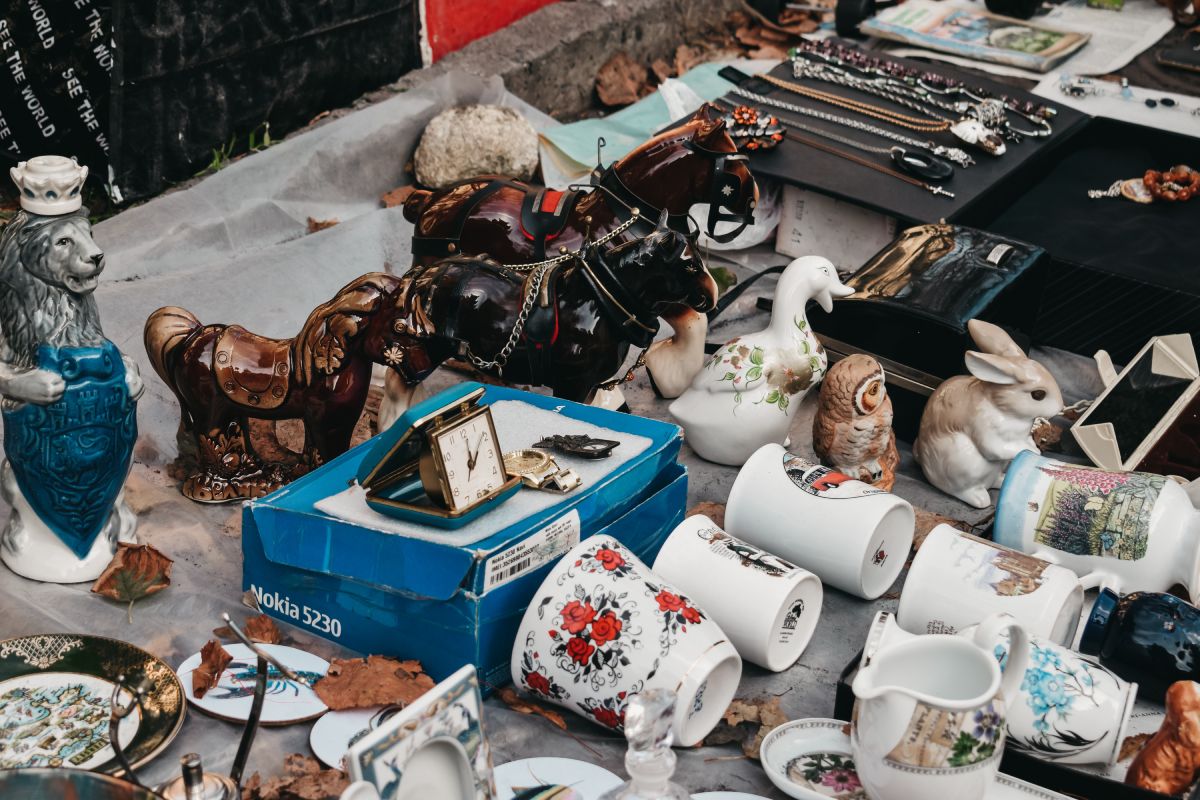
Recap of Key Points
A Journey to Remember
We’ve navigated the environmental cost of the fashion industry, highlighting the issues of fast fashion and waste generation. We’ve explored the benefits of second-hand shopping, from its ecological advantages to the unique finds it offers. We’ve discussed where to find second-hand treasures, how to effectively shop, and tips for maintaining your purchases. We’ve also provided guidance on selling and donating your items, debunked misconceptions, and evaluated the broader implications of shopping second-hand.
Importance of Embracing Sustainable Shopping Habits
Sustainable Shopping: A Necessity
With the environmental crisis looming over us, the need for sustainable habits is more important than ever. Shopping second-hand is an accessible, practical, and rewarding way to reduce your carbon footprint and help preserve our planet.
Shift in Mindset
Embracing second-hand shopping can foster a shift in mindset, helping you value quality over quantity, longevity over temporary trends, and ethical practices over fast fashion.
Encouragement for Readers to Opt for Second-Hand Shopping
One Small Step for You, One Giant Leap for Sustainability
Opting for second-hand shopping may seem like a small choice, but it can create a ripple effect, inspiring others to follow suit and contributing to a larger movement towards sustainable consumerism.
Your Role Matters
Never underestimate the power of individual action. Each second-hand item purchased is a vote for sustainable shopping, a stand against waste, and a contribution towards a more sustainable future.
As we conclude, remember that every journey begins with a single step. So, take that step, venture into the world of second-hand shopping, and become part of the solution. Let’s redefine our relationship with consumption, opting for sustainable, ethical, and conscious choices that benefit not just us, but our communities and the environment as a whole.

